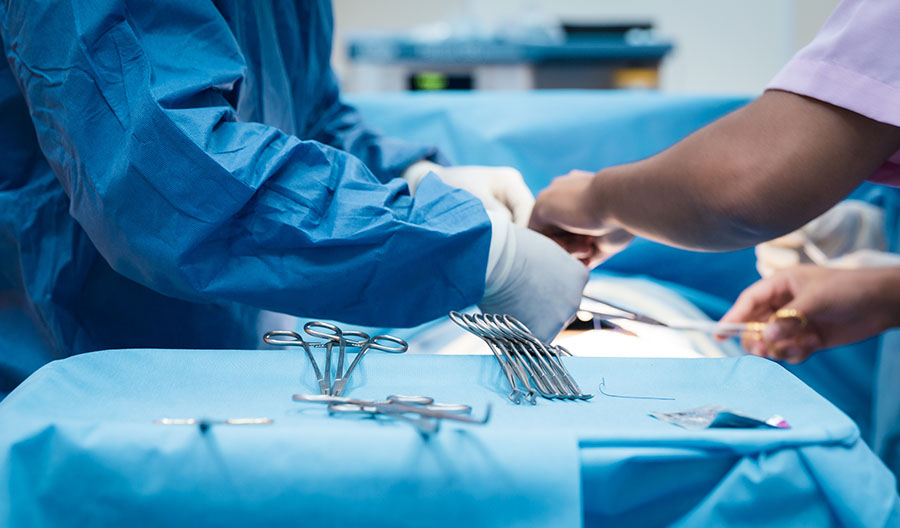Organ transplantation- Organs that can be transplanted in medicine today are the heart, lungs-heart simultaneously, liver, kidney, cornea and bone marrow. A donor- a person who donates part of their organ to another person Recipient- the patient that receives an organ from a person.
The types of transplantation;
A. Autotransplantation- this is the transplantation of organs or tissues from one part of the body to another in the same person.
B. Allotransplantation- the transplant of organ or tissues to a recipient from a genetically non-identical donor of the same species. Most human tissues or organ transplants are allografts.
C. Xenoransplantation- this is organ transplantation from an organism of another biological species (for eg. Animal to human). This is less common.
The Science and Immunology of Transplant
When the immune system encounters a foreign organism, it mounts an attack against it to protect the body from infection. To prevent an attack on our own cells and tissues (autoimmunity), the immune system must be able to differentiate between our own healthy tissues and foreign invaders.
Foreign invaders are presented to the immune system in the form of small molecules called antigens. Identification of these non-self antigens will trigger an immune response and will stimulate the production of antigen specific antibodies that mark infected cells for destruction by the immune system and help amplify the immune response. The Human Leukocyte Antigen (HLA) complex is a group of genes that encode the proteins responsible for identifying foreign agents to the immune system. These proteins are found on the surface of all cells and act as ‘self-markers’ telling the immune system not to trigger a response.
Each person will have their own specific set of HLA proteins, based upon their unique genetic make-up, that the immune system will have learned not to react to. Any cell not displaying these specific HLA proteins will be identified as ‘non-self’ by the immune system and will be treated as a foreign invader.
Mechanism of rejection
Graft rejection occurs when the recipient’s immune system attacks the donated graft and begins destroying the transplanted tissue or organ. The immune response is usually triggered by the presence of the donor’s own unique set of HLA proteins, which the recipient’s immune system will identify as foreign.
The degree of similarity between the HLA genes of the donor and recipient is known as histocompatibility; the more genetically compatible the donor and the recipient, the more tolerant the recipient’s immune system should be of the graft. However, unless the donor and recipient are genetically identical (e.g. as in identical twins) there will always be some degree of rejection. As well as nonself HLA proteins, other surface proteins on the donor graft can also be identified as a foreign antigen and illicit an immune response.
In some cases, a patient may experience something known as ‘graft versus host reaction’ where mature immune cells already present in the donor graft begin attacking the healthy cells of the recipient. Graft versus host reaction, where the donor graft is described as being “immune-competent” (i.e. capable of producing an immune response) is a particular risk with stem cell transplants (bone marrow transplant) and can also occur following blood transfusions.
Clinical stages of rejection
Hyperacute rejection
This occurs within minutes or hours after a transplantation and is caused by the presence of preexisting antibodies of the recipient, that match the foreign antigens of the donor, triggering an immune response against the transplant. These antibodies could have been generated as a result of prior blood transfusions, prior transplantations or multiple pregnancies. The antibodies react with cells in the blood vessels of the graft, causing blood clots to form, which will prevent blood supply from reaching the graft resulting in immediate rejection of the transplant.
Acute rejection
This occurs within the first 6 months after transplantation. Some degree of acute rejection will occur in all transplantations, except between identical twins. Recipients are most at risk in the first 3 months, but rejection can still occur at a later stage. Acute rejection is caused by the formation of antibodies following the detection of non-self antigens in the donated graft. If diagnosed early enough, acute rejection can be treated by suppressing the immune system and permanent damage to the graft can be avoided in some cases.
Chronic rejection
Repeated episodes of acute rejection can ultimately lead to chronic rejection of the graft and failure of the transplant. Chronic rejection commonly manifests as scarring of the tissue or organ which can occur months to years after acute rejection has subsided. At present, there is no cure for chronic rejection other than removal of the graft.
Patients who need liver, kidney, cornea and bone marrow transplantation can contact us to begin the processses.
